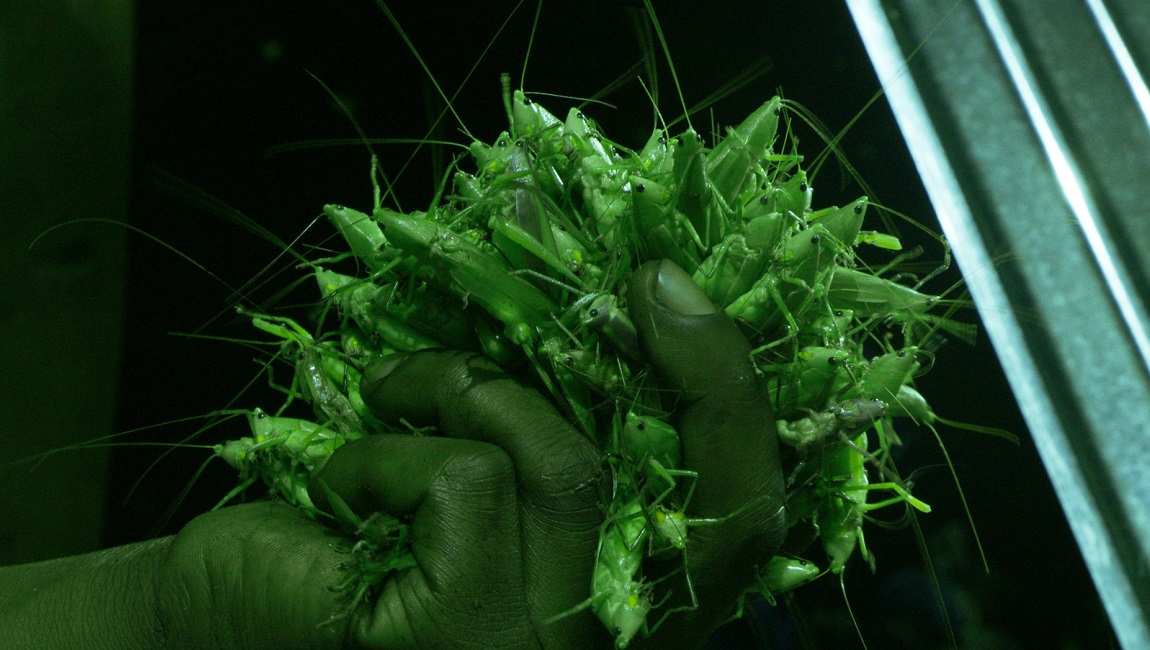There’s no denying the contemporary trend to “narrativize” otherwise fact-based documentaries, filmmakers shaping reams of footage into something resembling the three-act structure of the average mainstream narrative film (recent Sundance favorites All That Breathes and Against the Tide spring immediately to mind). It’s an understandable mode, as more filmmakers of more challenging work like Frederick Wiseman remain a largely niche concern, while even more demanding figures like Wang Bing barely get U.S. distribution at all. Grasshopper Republic deserves some credit, then, for its willingness to unmoor or otherwise flummox viewers, even if it can’t help but occasionally contort itself to fit this narrativized mold. Still, the noticeable lack of narration and absence of talking heads allow for a certain degree of (very welcome) sensory immersion. If this isn’t quite at the level of Lucien Castaing-Taylor and Véréna Paravel’s Leviathan or De Humani Corporis Fabrica, it’s far more engaging than another HBO-produced PowerPoint presentation or a bloated Netflix true crime serial.
Directed by Daniel McCabe and photographed by McCabe, Michael McCabe, and Michele Sibiloni — the film is inspired by her book of photography, Nsenene — Grasshopper Republic follows a group of trappers in Uganda who seek to catch huge numbers of the winged insects and sell them as a delicacy in nearby cities. It’s an elaborate, demanding job; while McCabe and his crew filmed footage over the course of three years, the film is condensed into one single, seemingly linear season. Men prepare their equipment, loading generators onto trucks and driving deep into the jungle. Once there, they must haggle with the local landowners and farmers for permission to set up traps on their land. It involves high-powered lights designed to attract the grasshoppers, which the farmers are convinced will damage their crops. Once the lights are set up, a series of large tin drums is arranged in a semicircle, with long sheets of corrugated steel sticking out of the openings. The idea is that the insects will hit up against the steel sheets and then slide down into the drums. Once full, the drums are emptied and their contents ready to be bagged and sold.
McCabe and crew film these proceedings with a patient, methodical eye; there is no “main character,” although we begin recognizing some of the same faces after a while. Snippets of captured dialogue are the only contextual information that the audience receives, and certain subjects are brought up but not followed through on — do the lights actually damage the crops? And what’s causing the skin condition that plagues some of the trappers? Interspersed throughout the film is an entirely different but parallel story, that of the grasshoppers themselves. Accompanied by an eerie, ambient electronic soundtrack by Robert Aiki Aubrey Lowe (best known for his work under the moniker Lichens and his collaboration with Ben Rivers and Ben Russell on their 2013 film A Spell To Ward Off the Darkness), we see grasshoppers hatching in laborious detail, like a nature documentary rendered with the moody atmosphere of a horror film. Grasshopper Republic is full of animal-related interstitial moments, as the camera briefly follows chickens, dogs, other insects, and the birds that congregate to feast on the grasshoppers. Ultimately, the film is an effort to capture an entire ecosystem, one not only natural, but also man-made (one of the first images in the film depicts wads of cash being exchanged in slow motion). Abstraction abounds, as distant shots of cityscapes become nocturnal digital chiaroscuro or when swarms of grasshoppers fill the frame and become akin to digital noise or a kind of Tony Conrad-esque flicker film. It’s equal parts beautiful aesthetic object and anthropological study, a window into an entire world that most of us know nothing about, or will ever experience in person. All in all, that’s a fairly stunning achievement.
Published as part of DOCNYC 2023 — Dispatch 2.







